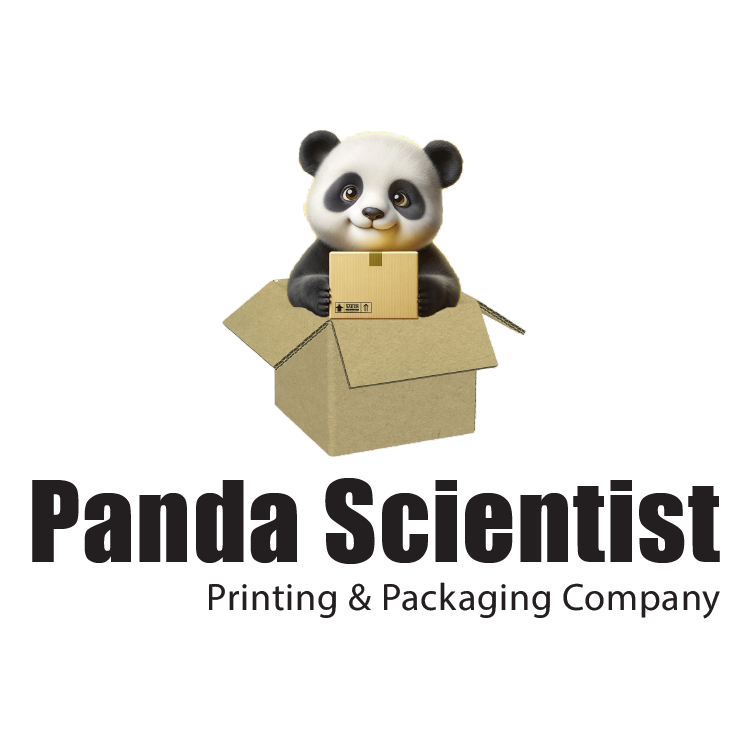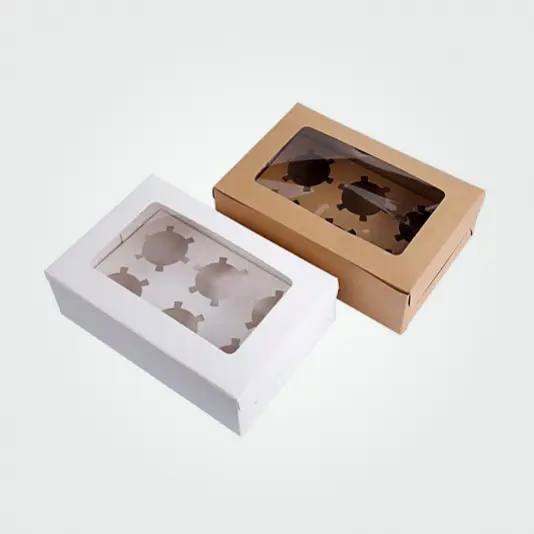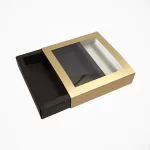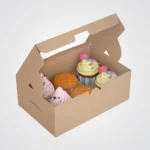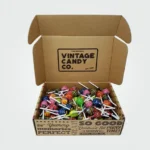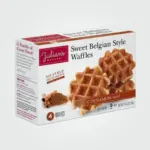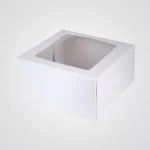Muffin Boxes
Custom Muffin Boxes
Buy the finest Custom Muffin Boxes from us and elevate the presentation of your delightful muffins. These boxes are not just about encasing the muffins, but they capture the essence of your brand and the care you put into baking. As a prominent packaging provider in the USA, we emphasize both aesthetics and durability in our Custom Muffin Boxes. Whether you have a bakery shop or deliver muffins to doorsteps, these boxes are tailored to retain the muffin’s freshness and charm. Let your customers experience the joy of unboxing their favorite treats, and watch your brand shine with every opened lid.
Introduction
Muffin boxes are a popular packaging option for bakeries, cafes, and other businesses that sell muffins. They are designed to provide protection to the muffins while making them easy to transport and store. Muffin boxes come in various sizes, shapes, and materials, and they can be customized to reflect the brand identity of a business. As consumers become more conscious of sustainability and the environmental impact of packaging, it is essential for businesses to choose the right type of muffin box that meets their needs while reducing waste. With that in mind, let’s dive into the world of muffin boxes and discover how they can help businesses sell their muffins more effectively.
Types of Muffin Boxes
Muffin boxes come in a variety of shapes, sizes, and materials. Each type has its own unique features, benefits, and drawbacks that businesses should consider before making a purchase. Below are the most common types of muffin boxes:
Cardboard Muffin Boxes
These are the most commonly used type of muffin boxes. They are made of lightweight and sturdy cardboard material that provides excellent protection to the muffins. Cardboard muffin boxes are available in various sizes, from small boxes that can hold a single muffin to larger boxes that can hold up to a dozen muffins. They can also be customized with prints, colors, and logos to reflect the brand identity of a business.
Benefits: Lightweight, sturdy, customizable, and eco-friendly if made from recycled materials.
Drawbacks: Not suitable for wet or oily muffins.
Plastic Muffin Boxes
Plastic muffin boxes are made of sturdy plastic material that is perfect for holding wet or oily muffins. They come in various sizes and shapes, and some even have compartments to keep the muffins separate. Plastic muffin boxes are reusable and easy to clean, making them a popular choice for businesses.
Benefits: Suitable for wet or oily muffins, reusable, and easy to clean.
Drawbacks: Not eco-friendly and can be bulky.
Paperboard Muffin Boxes
Paperboard muffin boxes are made of thick paperboard material that provides excellent protection to the muffins. They are available in various sizes and shapes, and they can be customized with prints and logos. Paperboard muffin boxes are eco-friendly and can be recycled after use.
Benefits: Eco-friendly, customizable, and sturdy.
Drawbacks: Not suitable for wet or oily muffins.
Foam Muffin Boxes
Foam muffin boxes are made of lightweight and insulated foam material that provides excellent insulation to the muffins. They come in various sizes and shapes, and they are perfect for transporting hot muffins. Foam muffin boxes are not eco-friendly and can take up a lot of space.
Benefits: Excellent insulation, lightweight, and suitable for hot muffins.
Drawbacks: Not eco-friendly and can take up a lot of space.
Different Styles of Muffin Boxes
The type of muffin box a business chooses will depend on its needs, budget, and environmental considerations. Businesses should carefully consider the features, benefits, and drawbacks of each type before making a purchase.
Clamshell Muffin Boxes
Clamshell boxes are one of the most common styles of muffin boxes. These boxes are designed to resemble a clamshell and have two halves that fit together. Clamshell boxes are available in various sizes and can hold multiple muffins.
Windowed Muffin Boxes
Windowed boxes feature a transparent plastic window that allows customers to see the muffins inside. These boxes are popular in bakeries and cafes, as they provide an attractive presentation for the muffins.
Single-Use Containers
Single-use containers are designed for individual muffins and are made of materials like paper, plastic, or foam. These containers are convenient and hygienic, making them ideal for grab-and-go items.
Two-Piece Muffin Boxes
Two-piece boxes consist of a base and a lid that fit together. These boxes are sturdy and secure, making them ideal for transportation and delivery.
Cupcake Inserts
Cupcake inserts are designed to hold cupcakes securely in place, preventing them from tipping over during transportation. These inserts can be used in conjunction with various muffin box styles.
Custom Muffin Boxes
Customized boxes can be designed to meet specific business requirements. These boxes can be printed with a business logo, color scheme, and other branding elements to create a unique brand experience for customers.
Choosing the right style of muffin box is essential to protect muffins, maintain their freshness, and provide an attractive presentation for customers. Businesses can choose from various styles of muffin boxes, each offering its unique features and benefits, to find the right one for their business.
Materials Used in Muffin Boxes
Muffin boxes are made of various materials, including cardboard, paperboard, plastic, and foam. Each material has its own unique properties, and businesses should consider the sustainability and eco-friendliness of each before making a purchase.
Cardboard
Cardboard is a popular material for muffin boxes. It is lightweight, sturdy, and easy to customize. It is also made from recycled materials, which makes it an eco-friendly choice. Cardboard is a renewable resource and can be recycled after use, which reduces waste and helps protect the environment.
Paperboard
Paperboard is a thick and sturdy material that provides excellent protection to muffins. It is also eco-friendly and can be recycled after use. Paperboard is made from sustainable and renewable resources, which makes it an ideal choice for businesses that prioritize sustainability.
Plastic
Plastic is a durable and sturdy material that is suitable for holding wet or oily muffins. It is also reusable and easy to clean, which makes it a popular choice for businesses. However, plastic is not eco-friendly and takes a long time to decompose. Businesses should consider using biodegradable or compostable plastic alternatives to reduce their environmental impact.
Foam
Foam is a lightweight and insulated material that provides excellent insulation to hot muffins. However, foam is not eco-friendly and takes up a lot of space in landfills. Businesses should consider using biodegradable foam alternatives to reduce their environmental impact. Businesses should consider the sustainability and eco-friendliness of the materials used to make muffin boxes. Cardboard and paperboard are ideal choices for businesses that prioritize sustainability, while plastic and foam can be suitable alternatives for specific needs. It is essential for businesses to choose the right material to reduce waste and protect the environment.
Design and Customization
Muffin boxes can be customized to reflect the brand identity of a business. Customization is an essential aspect of packaging design as it creates a unique identity and helps businesses stand out from their competitors. Below are the design options available for muffin boxes:
Colors
Muffin boxes can be customized with a variety of colors to reflect the brand identity of a business. The color scheme should be consistent with the overall branding of the business. Prints – Muffin boxes can be printed with a business logo or other branding elements. Printed boxes can create a unique identity for the business and make it easier for customers to remember the brand.
Shapes
Muffin boxes can be designed in a variety of shapes, such as rectangular, square, or circular. Unique shapes can create a memorable experience for customers and make the brand stand out.
Sizes
Muffin boxes come in various sizes, from small boxes that can hold a single muffin to larger boxes that can hold up to a dozen muffins. Choosing the right size can help businesses optimize space and reduce waste. Customizing muffin boxes is an excellent way for businesses to create a unique identity and stand out from their competitors. The design options available for muffin boxes are vast, and businesses should consider their brand identity and target audience when choosing the design elements. By choosing the right design, businesses can create a memorable experience for customers and increase brand loyalty.
Benefits of Muffin Boxes
Muffin boxes offer numerous benefits for bakeries, cafes, and other businesses that sell muffins. Here are some of the benefits:
Marketing
Muffin boxes can be customized with the business logo or other branding elements, which helps with brand recognition and recall. The boxes can also be designed in attractive colors and prints that catch the attention of potential customers.
Customer satisfaction
Muffin boxes can enhance the customer experience by providing a convenient and hygienic way to transport muffins. Customers can easily take their muffins on-the-go without worrying about getting crumbs or icing on their hands.
Product protection
Muffin boxes provide excellent protection to muffins, preventing them from getting squished or damaged during transportation. This helps ensure that customers receive fresh and intact muffins, which can improve their satisfaction with the product.
Convenience
Muffin boxes are convenient for businesses to use as they are easy to store, stack, and transport. They also come in various sizes, making it easy to accommodate different muffin quantities. Muffin boxes offer numerous benefits for businesses that sell muffins. They can help with marketing, customer satisfaction, product protection, and convenience. By using muffin boxes, businesses can create a positive customer experience and increase brand loyalty.
Cost Considerations
When it comes to muffin boxes, businesses must consider the cost of different types of boxes and the materials used to make them. Here is an overview of the cost considerations:
Types of muffin boxes
There are several types of muffin boxes available in the market, including cardboard, paperboard, plastic, and foam. Each type of box has its own cost, and businesses should choose the type that fits their budget and meets their requirements.
Materials used
The cost of muffin boxes is also affected by the materials used to make them. For example, cardboard and paperboard boxes are typically cheaper than plastic or foam boxes.
Quantity
The quantity of muffin boxes purchased can also affect the cost. Businesses can often save money by purchasing larger quantities of boxes. Customization – Customized muffin boxes are usually more expensive than plain boxes. However, customization can help businesses stand out and increase brand recognition.
Businesses can save money on muffin boxes without compromising on quality by:
Purchasing in bulk
Buying muffin boxes in bulk can often result in cost savings.
Choosing a simpler design
Customized muffin boxes can be expensive. Choosing a simpler design or using pre-made boxes can help businesses save money.
Using eco-friendly materials
Eco-friendly materials like cardboard and paperboard can be cost-effective and help businesses save money in the long run. Cost considerations are an essential aspect of choosing muffin boxes. Businesses must consider the cost of different types of boxes, materials used, quantity, and customization when selecting muffin boxes. By making informed decisions and taking advantage of cost-saving opportunities, businesses can save money on muffin boxes without compromising on quality.
Best Practices for Using Muffin Boxes
Using muffin boxes effectively is crucial for businesses to maintain product quality, customer satisfaction, and a positive brand image. Here are some best practices for using muffin boxes:
Storage
Muffin boxes should be stored in a clean, dry, and cool area to prevent moisture and heat from damaging the boxes and muffins. Avoid storing boxes in areas where they may be exposed to direct sunlight or humidity.
Handling
Muffin boxes should be handled with care to avoid crushing or damaging the muffins inside. It is essential to ensure that the boxes are properly closed and secured during transportation to prevent the muffins from shifting and getting damaged.
Disposal
Businesses should dispose of muffin boxes responsibly, following local waste disposal guidelines. If the boxes are made of eco-friendly materials like cardboard or paperboard, they can be recycled. Businesses should avoid using non-biodegradable materials like foam or plastic as they are harmful to the environment.
Hygiene
Muffin boxes should be kept clean and hygienic to prevent contamination of the muffins. It is essential to ensure that the boxes are free from dust, dirt, and other contaminants before placing the muffins inside.
Branding
Muffin boxes can be used as a branding tool, and it is essential to ensure that they reflect the business’s brand identity. Businesses can use customized muffin boxes with their logo, colors, and other branding elements to create a unique brand experience for their customers. Businesses should follow best practices for using muffin boxes to maintain product quality, customer satisfaction, and a positive brand image. Proper storage, handling, disposal, hygiene, and branding are crucial aspects that businesses should consider when using muffin boxes. By using muffin boxes effectively, businesses can enhance the customer experience and increase brand loyalty.
Final Thoughts
Muffin boxes are an essential aspect of the bakery and foodservice industry. They help to protect muffins, maintain their freshness, and provide an attractive presentation for customers. In this article, we have discussed the different types of muffin boxes, the materials used to make them, the benefits of using them, and the best practices for their use. Here are the key points to recap:
Choosing the right muffin box for your business is essential to maintain customer satisfaction and increase brand recognition. By considering the type of box, materials used, cost, and best practices for their use, businesses can make informed decisions that will benefit their brand and customers.
In conclusion, muffin boxes may seem like a small detail, but they play a crucial role in the success of bakeries and foodservice businesses. By choosing the right muffin box, businesses can enhance the customer experience, increase sales, and promote their brand.


